Unobrificated contacting phlebolologists with developed varicose veins is the main reason that it is too late to affect the disease of fat or gel.The doctor must prescribe more efficient treatment, including the operation on varicose veins on the legs most effective.We should not forget that even operational removal of the vessel on the goal of the disease does not guarantee full cure - the disease can be expanded to healthy tissues.
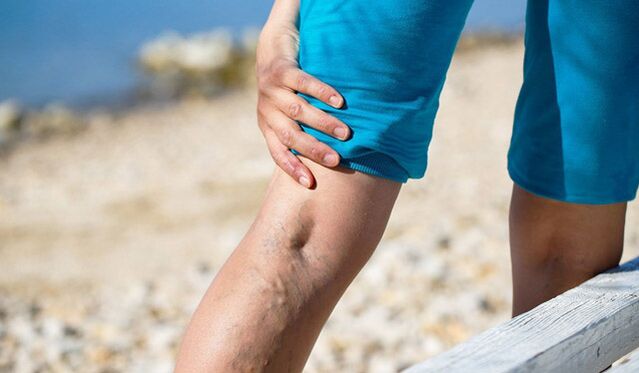
Varicose spread or varicose veins is a disease that characterizes the weakness of the valve in the veins and dysfunction of the vascular wall, as well as stagnation of blood in the upper extremities.This pathology is crowded not only by violating trophyism, and the fabric of the fabric, the result of which can be difficult and long-lasting cure, but are also dangerous in that stall thicknesses of blood and blood churches that can be worn throughout the body.In addition, in case of formation of thrombotic impositions within the vascular wall (flebotrombosis), its infection is possible to have its infection - thrombophlebitis.
Varicose disease operations
Work for varicose veins of the lower extremities is radically and consisting of removing subcutaneous veins of the lower extremities (flectomy) or in the sclerosis of deep veins of the lower leg and hook.
Traditionally, flebectomy (observer) is done according to the Bebcock method and consists in the introduction of a probe in a vein with a later part of the veins completely over its length through the cut on the skin outside.The incision is seamed at the end of the cosmetic seam surgery.
The mini-flebitomy is used to remove very short parts of the vein, the veins are not used during the operation.The skin cuts are not carried out, and a piece of vein is removed by a thin parabody on the skin that does not require imposing seams.
With a small surface of varicose veins damage, it is possible to perform a gentle technique - removal.It stretches with a thin hook only a varicose node.Experience is done using two cuts on the skin with their subsequent chess.Different this technique is crionthroping - "sinking" vein in cryosonds using low temperatures, the destructive node is also stretched out.
Vienna sclerosion is the introduction of sclerosant in her lumen - a substance that "beautiful" walls with each other, but the vein remains deep under the skin, not their functions.Blood flow through veins stops and passes through collateral vessels, without violating the outflow of venous blood from the lower limbs.Vienna sclerosis is done under ultrasound control.
Laser endovascular coagulation of varicose veins is the latest method in flexology and consists in the introduction of a thin probe in Lumen with laser radiation, which performs the catering effect on the walls of the vein.
The method of radio frequency output is the vein also relates to more modern treatment of varicose veins, but not all medical facilities are equipped with appropriate equipment.The technique consists in the "cauterization" effect on the vascular wall of the high frequency radio wave.
Indications to remove veins
Not all patients are displayed, but in some cases, it is still impossible to do without it, because it is better to remove the source of potential inflammation and blood clots but expect complications.States that require surgical intervention include the following:
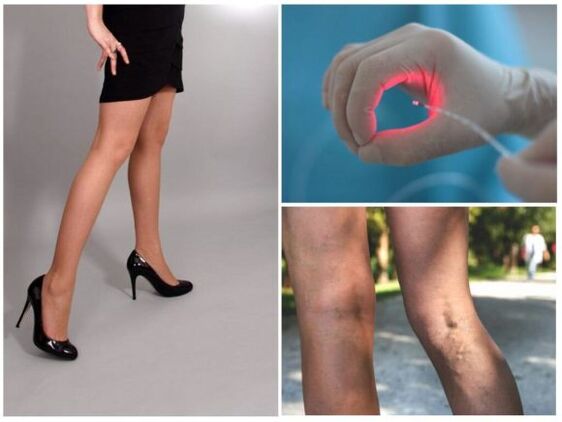
- The risk of occurrence or already producing thrombophphlebitis,
- Frequent deterioration of thrombophlebitis,
- Huge damage to subcutaneous veins,
- Heavy symptoms of varicose veins - a constant sense of seriousness and pain in legs,
- Neharni trophic ulcers,
- Dietary disorders (triple) of lower extremity tissues - color and cooling of skin and feet skin.
Contraindications to surgery
Performance Even the minimum vascular intervention is contraindicated in the following cases:
- Pregnancy 11 and 111 Trimester,
- Acute infectious diseases,
- Woriors of chronic diseases (bronchial asthma, diabetes melitus, stomach ulcer, etc.),
- Acute gait,
- Acute myocardial infarction,
- Elevated inflammation of lower extremities.
In any case, all indications and contraindications are determined by a fleet or surgeon in the patient's full survey process.
What method to choose?
The use of a certain treatment method only assesses a doctor, based on the degree of expansion of the process.
Of course, with small nodes, fewer invasive methods are more desirable, such as mini-flextomy, short skit, laser spraying and sclerosis, due to the fact that less traumatic and practically do not require a rehabilitation period.At the same time, with a large length of varicose veins, it is given to traditional flectomy, which not only requires only spinal anesthesia, but also quite a traumatic surgery, leaving a aesthetic failure in the form of postoperative coasters on their feet.
In this regard, you should not postpone the visit to the doctor at the existing initial phase of varicose veins, and you don't even need to leave less traumatic operations if the doctor saw the need for that time.
When is it better to do surgery?
The decision on the need for surgical treatment is done only after consulting with a flexologist or vascular surgeon.However, at an early stage, when the patient is worried only for aesthetic discomfort in the form of varicose nodes, as well as light swelling of the foot at the end of the day, you can try to stop further processing processes and venotonic medications.
In case there is pain in the limbs, as well as the risk of complications, not recommended to delay the operation.
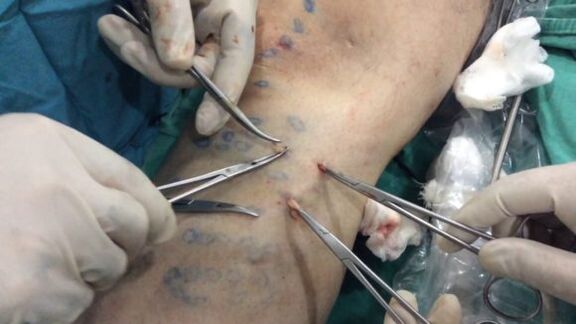
Preparing for surgery
Before planning the vein removal operation, the patient should be done through the necessary tests.They include the consultation of a surgeon or flectologists, as well as ultrasound of the vein of the lower extremities.In case the patient shows the removal of veins, whether you should be performed in an outpatient phase, especially general and biochemical blood tests, coagulation blood tests (INC, acts, etc.), ECG and chest organization.
On the day prescribed by the doctor, the patient must come to a medical institution by practicing the fleet.You can independently shake hair on the lower leg, thigh and in an inguinal zone on the side of the affected limb.The day before, you should be limited to a slight dinner, it is necessary to come to an empty stomach.The patient must warn the operating doctor and anesthesiologist on intolerance to drugs previously taken.
How to perform operations
Once the patient arrives in the clinic and an initial examination by operational surgeons and anesthesiologists, the issue of anesthesia is resolved.In the event of a conventional phlebectomy, spinal anesthesia is used, with mini operations, local anesthesia is used by choking the skin of the Novokaine or Lidocaine solutions.
After the appearance of anesthesia, the surgeon establishes the location of the veins using ultrasonic diplenography (UZDG).Then, a probe is introduced through the cutting cut, and the main phase of surgery - the intersection and overflow of veins during phlebectomy, stretching veins with mini-function, not through cut) or not exposure to the laser on the walls of the vessel.The main phase lasts from half an hour to two to three hours, depending on the amount of work.
After the main stage they are cut on the skin, the wound is applied by pressure from the aseptic bend, and the patient is accompanied in the department, where he will be in observation from a few hours to day.In the patient department, he puts on the linen compression, which is not removed for three days.
Day later, the patient goes home.If the surgeon prescribes the overflows, the patient visits them every day or every other day.The seams are removed seven days after surgery, and two months later, the rise of the lower extremities is made.
When is the operation not allowed?
Although a vein removal operation with varicose veins gives good forecasts and are implemented by effective methods, there are still numerous factors, whose presence is contraindications to surgical intervention:
Removing the fleety of varicose veins
- A thrombosis of deep veins of the lower extremities.
- When inflammatory processes appear on their feet, including erizipel and eczema.
- Heart disease and infectious diseases.
- 2. and 3. Trimester pregnancy.
- Unexpired age.
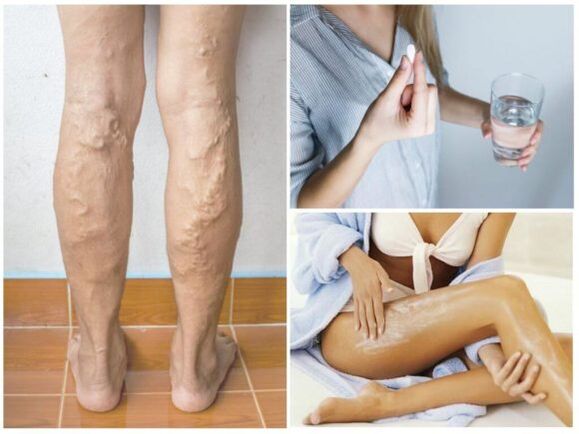
Are the possible complications after surgery?
Operation technique, decades, annoyed on perfection allows you to minimize the risk of postoperative complications.However, in extremely rare cases (less than 1%), the development of such harmful consequences as:
- Postoperative hematomas on the skin - are solved several months,
- Postoperative seals under the skin along the beds of distant veins also disappear a month or two after surgery,
- Mechanical impairment of lymph containers (Lymphe) are treated conservatively, but after a few months, LIMF is beginning to circulate according to the anastomosis, and the lymphotot from the limb is properly performed properly.
- Damage to subcutaneous nerves, manifest passing skin sensitivity disorders - independently straightened several months.
Complications and consequences of surgical treatment
No matter how talented surgeons can be, varicose veins after surgery sometimes feels in the form of complications again.No one can assume how that or that organism will behave.After surgical intervention on the removal of varicose veins 2 and 3, it may be a consequence that do not require treatment - bruises and hematomas, it is a normal reaction of the body to damage to tissue.If the patient follows the recommendations, then everything will pass very quickly.Among other consequences, it can be noted:
- abundant bleeding;
- reduction of limb sensitivity (manifests with impacting subcutaneous nerves);
- Support when entering the infection;
- stiffness, etc.
As for pain, they can be noticed exclusively with flebectomy, the other two methods of treatment are almost painless.If there are subsequently unpleasant sensations, then easily stop the analgesics.
The consequences can be serious;Among the most dangerous, thromboembolia is different.This is an acute clogging of the blood vessel with a thrombus, which broke through the place of its localization and circulated against the blood flow.If the patient is helpful in a timely manner, then he can become a person with a disability, and even die.
Forecast and lifestyle after surgery
After surgery, a few days, painful pain in the operational daily and insignificant edema are possible.To stop unpleasant symptoms, the doctor is prescribed non-nesses, etc.Immediately after surgery, the patient should start carrying compression laundry and performs the exercises of physiotherapy exercises prescribed by the exercise of physiotherapy.
On the second day after surgery, the patient is allowed to walk a little.After a week or two, slow walking should be provided for several hours a day.
Such provisions as ::
- Dismissing bad habits,
- Proper diet with the exception of fat and harmful products,
- Compliance with the mode of operation and vacation,
- Exclusion during working hours from just sitting or standing only - a change in the position of limbs in the process is required.
In conclusion, I would like to note that they are judging by reviews, vein removal operations are sufficiently favorable, and serious complications are practically not arising.Moreover, the risk of living - for example, for example, the complications of varicose veins (thromboembolism) decreases sharply after removing extended veins.Currently, the amputation of limbs is due to severe inflammation and even gangrene due to thrombophlebitis (especially against the background of diabetes), so it is better to contact the surgeon at an early stage and do not refuse to remove veins if there is a need.Therefore, you will keep yourself not only healthy limbs, but also the health of the whole organism as a whole.
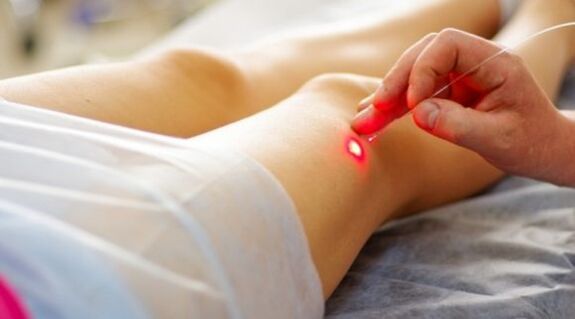
Preventive measures
With a negative heir, when relatives diagnose varicose veins or persons at risk are for various reasons, prevention measures are important:
Varicose injection
- Take Vitamin C regularly, which strengthens blood vessel walls and improves the characteristics of blood composition;
- Use medication, their entry must be agreed with a doctor;
- use compression bedding;
- Physically ... It is important, swimming, walking on foot, cycling, riding blood flow well.
Prevention also implies a transition to a healthy lifestyle - you need to revise a diet and leave bad habits.


















